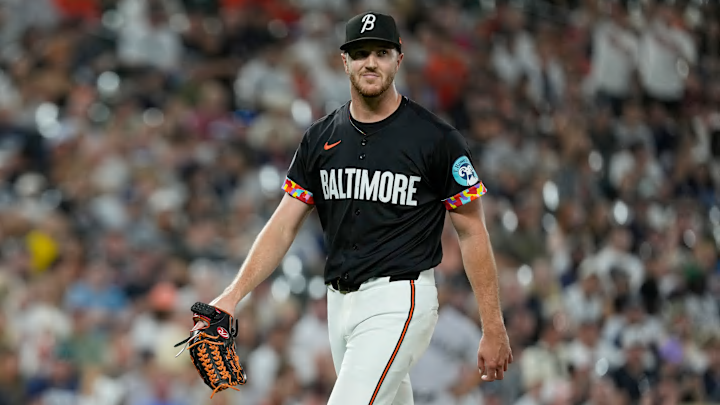Trevor Rogers’ 2025 season with the Baltimore Orioles was nothing short of exceptional. Across 18 games the southpaw racked up 9 wins, a 1.81 ERA, and 103 Ks across 109.2 IP. His dominance was enough to earn him down ballot Cy Young Award votes despite not appearing in a major league game until May 24th.
At the time of his acquisition for Kyle Stowers and Connor Norby at last year’s trade deadline, fans were doubtful the 27 year-old would ever prove impactful enough to justify parting with such high-profile prospects. However, he has been better than advertised in every conceivable metric, leaving fans excited about the possibility of a Cy Young push in 2026. But how is it that this dominance emerged from seemingly nowhere to propel Rogers to the front of the Orioles’ pitching staff and into the hearts of the Birdland faithful?
Explaining Trevor Rogers ascendance in 2025 simply comes down to offseason adjustments paying off big
First off, it’s worth noting that while Rogers’ current production is unlikely to be matched by anyone over a full season, expected stats confirm that this performance isn’t just a flash in the pan. His 3.36 xERA, .227 xBA, and 24.3 K% rate tell the story of a legitimately elite left-handed arm built to sustain top-of-the-rotation level performance (for reference, Phillies’ free agent starter Ranger Saurez owns a near-identical 3.14 xERA .228 xBA, and 23.2 K%). So what changed to help the former Marlin not only regain his 2021 form that was thought to be lost, but surpass it en route to his best year yet?
The answer may be found in his offseason work at Driveline’s Arizona facility. While there, staff quickly identified an issue: strength. In fact, Rogers’ strength metrics were so low that Driveline’s internal metrics would expect him to throw just 83 MPH. While some would take this as a harbinger of doom for their major league career, Rogers was actually relieved, saying “it was like, ‘thank God’. I was thankful we found a problem.”
With this newfound insight, Rogers quickly got to work with a new personalized strength routine, navigating his past back issues with the Marlins and building up a more stable and effective workout program which contributed to Rogers boosting his average fastball velocity from 91.9 to 93.1 MPH, right in line with league average for a left-handed pitcher. More importantly, this velocity came much easier than years before, meaning Trevor could focus on mechanics and finesse instead of putting every ounce of energy into his pitch velocity to simply keep up at the major league level. As such, it’s no surprise that his walk rate plummeted from a disastrous 10% in 2024 to an above-average 6.9% this past season.
And the best part? There might still be more in the tank in that left arm of his. After all, Rogers had been averaging as high as 94.5 MPH on his heater in his breakout 2021 campaign in Miami, and with his newfound strength (which he actually got back to league average in just one offseason with Driveline!) there’s no telling what another offseason can do for the Orioles phenom.
With all this in mind, the sudden improvement of Rogers deserves nothing but the utmost praise for himself and the development staff of both Driveline and the Orioles. The ability to reclaim pitchers and find new life in their bodies and arms is a skill most organizations would kill for, and Rogers stands as a shining example of the abilities Baltimore possess to rejuvenate cast-off pitchers and turn them into high-level arms.
The future looks bright for Trevor Rogers in Baltimore, and one sincerely hopes that his next season will see him toe the slab in front of a packed playoff crowd in Birdland. After all, if Rogers simply regaining average strength and velocity was all it took to build himself into an elite arm, I’m beyond eager to find out what he can do with another full offseason to become even stronger.
